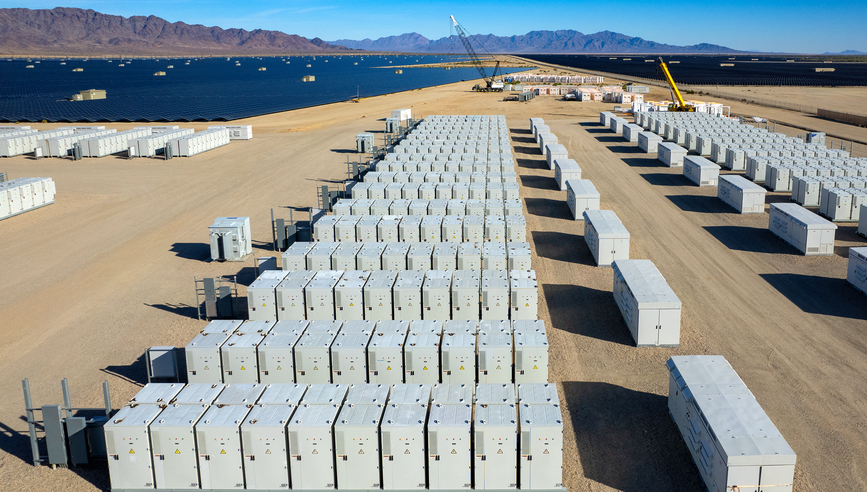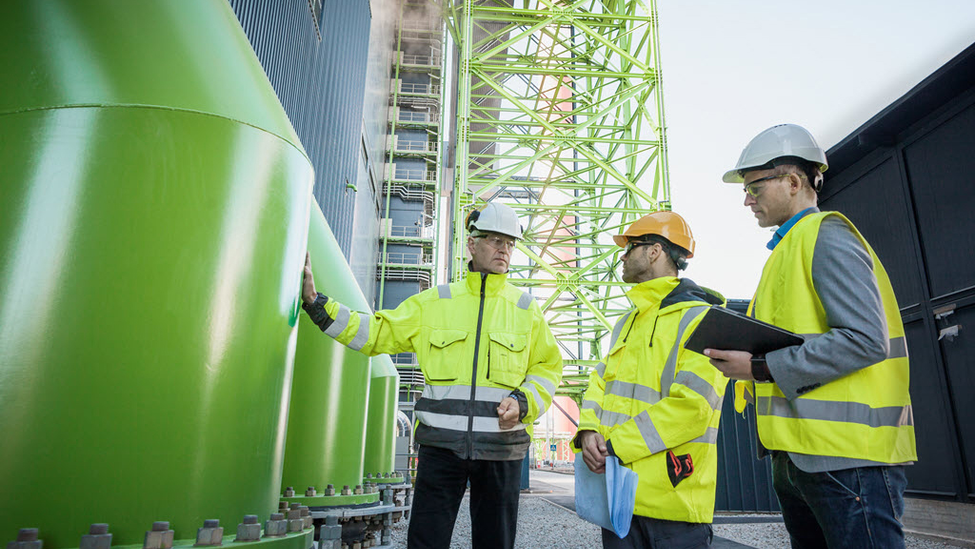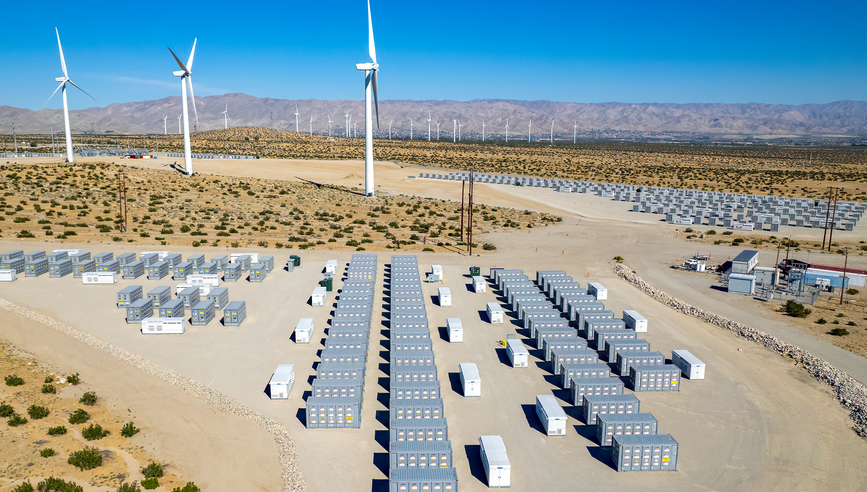Battery Energy Storage System (BESS) Technology Growth and Risks


Renewable energy sources, such as solar and wind, are projected to generate 44% of all power in the U.S. by 2050,1 which is increasing demand for the battery energy storage systems (BESS) needed to store this energy.
Unprecedented public investment in clean energy – afforded mainly by the Infrastructure Investment and Jobs Act, or IIJA (2021), the Inflation Reduction Act (2022) and the CHIPS Act (2022) – is fueling much of this growth. Market stakeholders include entities involved in the manufacturing, sales, installation, maintenance and operation of BESS facilities.
$30.1 billion annual expenditures in the energy storage sector expected in 2030.2
75% of planned installations by 2025 will be in California and Texas.3
BESS-enabled applications
Without the means to effectively store generated energy for later use, grid-scale renewable power is difficult to sustain. Market growth potential, therefore, is intimately linked to breakthroughs in battery energy storage. Emerging applications of BESS include:
- Peak shaving. BESS can reduce the peak electricity demand by using stored energy to meet part of the demand, which can reduce the overall cost of electricity.
- Backup power distribution. BESS can provide backup power for a microgrid in an outage while helping to stabilize the grid by providing energy during peak demand periods. It can also be used with Uninterruptible Power Supply (UPS) systems to supply continuous power for critical loads.
- Energy self-reliance & cost control. BESS can improve power quality by smoothing out voltage changes and fluctuations, which may help some businesses maximize operational efficiency while minimizing utility costs.
- New revenue streams. BESS can create opportunities to optimize business resources for financial gain – for example, selling any excess back to the grid to power the surrounding community, cutting utility costs and earning extra income at the same time.
BESS system components
Battery energy storage systems are generally made up of the following components:
- Battery modules/rack. A group of individual battery storage cells linked together and operating as one unit.
- Battery management system (BMS). An electronic system that monitors parameters such as temperature and cell voltages and helps prevent the battery from operating outside its safe operating envelope.
- Energy management system (EMS). Acts as the control center, providing input signals to the rest of the system to charge or discharge.
- Containers or storage enclosures. Houses the BESS components.
- Power conversion system (PCS). Composed of inverters and transformers.
Battery chemistry
Lithium-ion (Li-ion) batteries are the predominant type used for BESS in the United States. Different Li-ion chemistries exist and may be chosen based on the balancing of needed energy density, thermal stability, battery life and cost:
Chemical Name
Lithium Cobalt Oxide also known as lithium cobalt or lithium-ion-cobalt
- Short form: Li-cobalt.
- Applications: Cellphones, laptops, cameras.
Lithium Manganese Oxide also known as lithium manganate or lithium-ion-manganese
- Short form: Li-manganese, or spinel.
- Applications: Power tools, e-bikes, EVs, medical, hobbyist.
Lithium Iron Phosphate
- Short form: Li-phosphate.
- Applications: Power tools, e-bikes, EVs, medical, hobbyist.
Lithium Nickel Manganese Cobalt Oxide also known as lithium-manganese-cobalt-oxide
- Short form: NMC.
- Applications: Power tools, e-bikes, EVs, medical, hobbyist.
Lithium Nickel Cobalt Aluminum
- Short form: NCA.
- Applications: Gaining importance in electric power train and grid storage.
Lithium Titanate
- Short form: Li-titanate.
- Applications: Gaining importance in electric power train and grid storage.
Balancing BESS risks with the rewards
Incorporating battery energy storage solutions into your business operations in a safe, scalable, financially viable way requires that stakeholders successfully navigate the associated challenges. Before adopting BESS technology, careful consideration should be given, at a minimum, to:
- Type and sourcing of the BESS.
- Location, planning and design.
- Construction, transport, rigging, installation and commissioning.
- Operations & maintenance (O&M).
In addition, three overarching industry concerns to keep in mind when considering if and which BESS is right for your business include:
1. Raw materials
Graphite, lithium, cobalt and nickel – important minerals for battery production – are predominantly sourced overseas. This can create cost, transportation and political challenges – although incentives provided in the Infrastructure Investment and Jobs Act, the Inflation Reduction Act and the CHIPS Act may help alleviate some of these pain points.
65% of flake GRAPHITE is mined in China, where labor and environmental conditions are typically not up to U.S. standards.4
75% of LITHIUM resources are found in Argentina, Chile and Bolivia, commonly referred to as the Lithium Triangle.4
65% of COBALT production occurs in the Democratic Republic of Congo.4
50% price increase following Indonesia’s 2014 ban on NICKEL exports, with similar international policies often causing price volatility for this resource.4
2. Fire and explosion risks
Fires can be caused by temperature, cell defects, damage during installation, operational issues and lack of maintenance.
One unique BESS hazard is battery fire and/or explosion caused by thermal runaway, or the rapid uncontrolled release of energy from a battery cell. Thermal runaway can be caused by an internal short circuit, which can be caused by mechanical, thermal or electrical damage to the battery before, during or after installation.
3. Environmental pollution and health hazards
Some chemicals used to make batteries may be hazardous. Even when the best safe handling practices are followed, accidents can happen – and any damage caused during the manufacturing, transportation or disposal process can expose people working or living in or near a BESS facility to harmful gases or pollute the surrounding soil and groundwater.
Thermal runaways require a significant amount of water to cool and control. Potentially hazardous chemicals released during the fire can pollute the water used to fight it, contaminating any soil or groundwater absorbing the runoff.5 Fumes released can also be a risk to the public and first responders.
Effective BESS risk management
Managing BESS-related risk depends on planning, preparation and having a trusted, experienced partner. With a dedicated team of energy experts and Claim specialists, Travelers has been providing specialized coverage and risk control solutions to support owners and operators in the rapidly growing renewables industry for over 30 years.
To learn more, visit Travelers Insurance for the Renewable Energy Industry or contact your agent today.
Sources:
1 EIA projects that renewable generation will supply 44% of U.S. electricity by 2050, U.S. Energy Information Administration, March 18, 2022. - https://www.eia.gov/todayinenergy/detail.php?id=51698
2 Bloomberg New Energy Finance (BNEF), 2019 Long-Term Energy Storage Outlook, Bloomberg NEF, New York, 2019 – as cited in Energy Storage Grand Challenge: Energy Storage Market Report, U.S. Department of Energy, December 2020, pg. 17. - https://www.energy.gov/sites/prod/files/2020/12/f81/Energy%20Storage%20Market%20Report%202020_0.pdf
3 U.S. battery storage capacity will increase significantly by 2025, U.S. Energy Information Administration, Dec. 8, 2022. - https://www.eia.gov/todayinenergy/detail.php?id=54939
4 The Critical Ingredients Needed to Fuel the Battery Boom, Visual Capitalist, Oct. 26, 2016. - https://www.visualcapitalist.com/critical-ingredients-fuel-battery-boom/
5 Lithium-Ion Battery Energy Storage and Emerging Risks for Business, Travelers.com. - https://www.travelers.com/resources/business-industries/energy/lithium-ion-battery-energy-storage-emerging-risks-business



